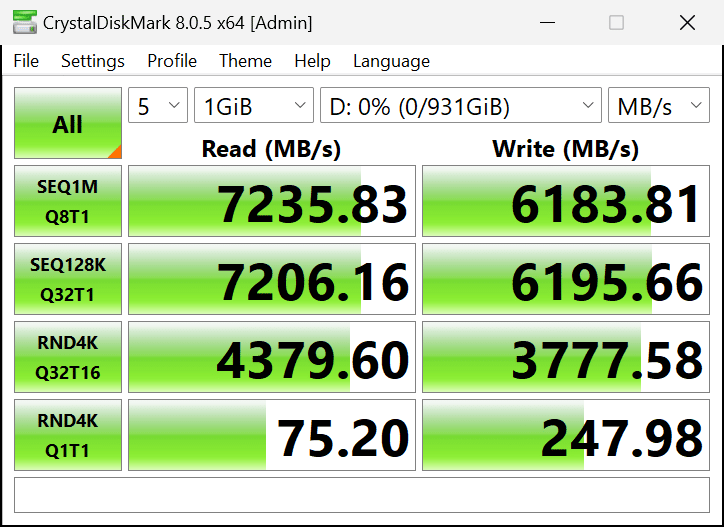Throughput Benchmarks (SEQ and RND)
CrystalDiskMark
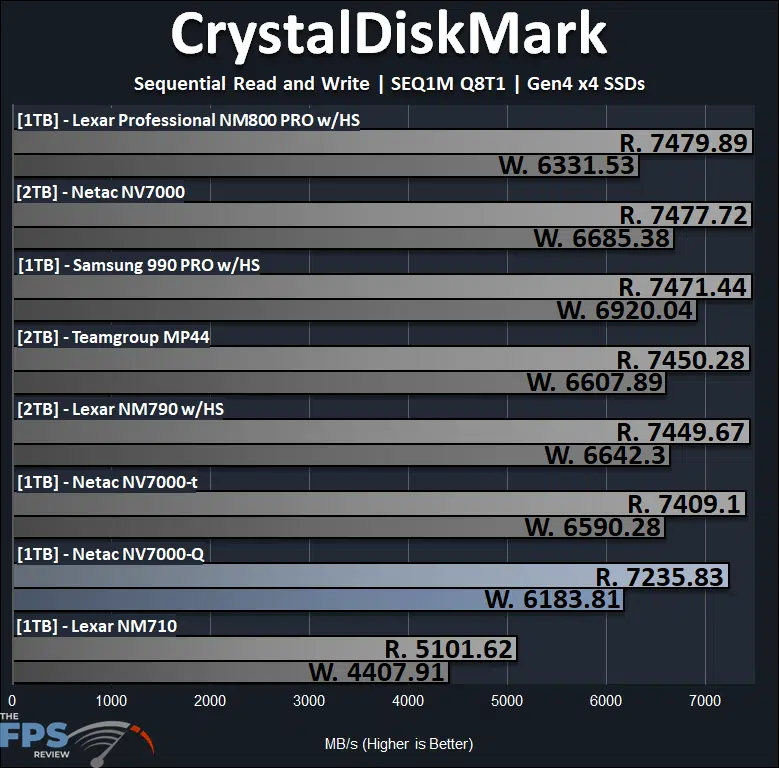
The rated sequential speed on the Netac NV7000-Q 1TB PCIe Gen4x4 NVMe SSD is 7,100MB/s read and 6,200MB/s write. According to CrystalDiskMark SEQ1M Q8T1 the Netac NV7000-Q 1TB PCIe Gen4x4 NVMe SSD is performing as advertised. It reaches 7,235MB/s sequential read speed which is above the rated speed, and 6,183MB/s which is right at the maximum write throughput. Therefore, it does perform as advertised and meets the specification in this benchmark of sequential throughput.
Naturally, faster rated drives will show higher sequential throughput if that is their spec. The Netac NV7000-t is rated at 7,300MB/s read and 6,600MB/s write, so it does perform just a bit faster overall on sequential throughput than the Netac NV7000-Q, but both are still very close to each other. The NV7000-t has a slight write advantage. The Netac NV7000 is also a bit faster, but also rated higher, and again has a write advantage. The Netac NV7000-Q is a very competitive drive in throughput being QLC, it can reach that 7GB/s read barrier, and 6GB/s write barrier, competing with the rest in this range.
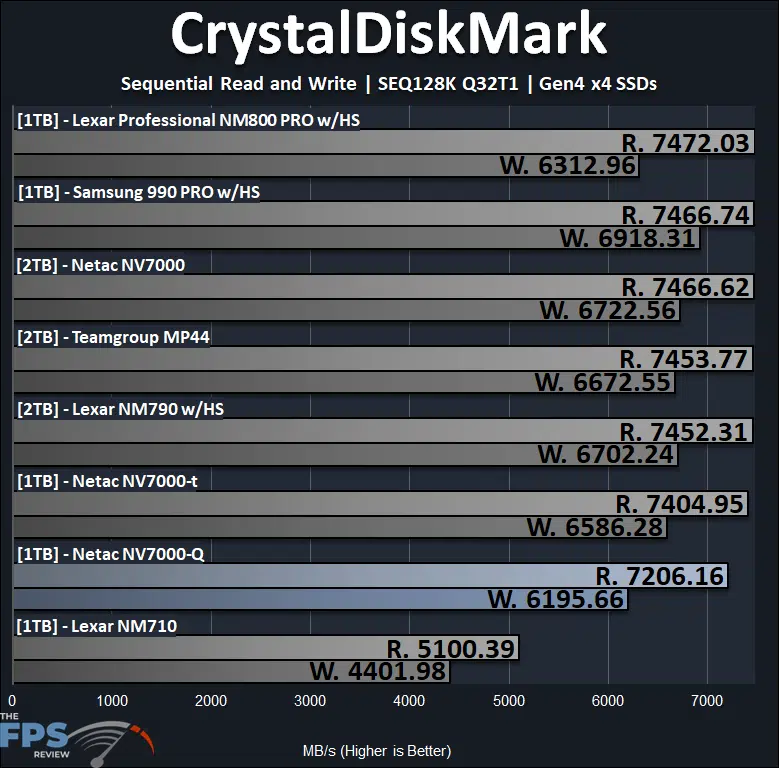
In SEQ128K Q32T1 the Netac NV7000-Q 1TB PCIe Gen4x4 NVMe SSD is producing the same results for read and write performance and performing as advertised.
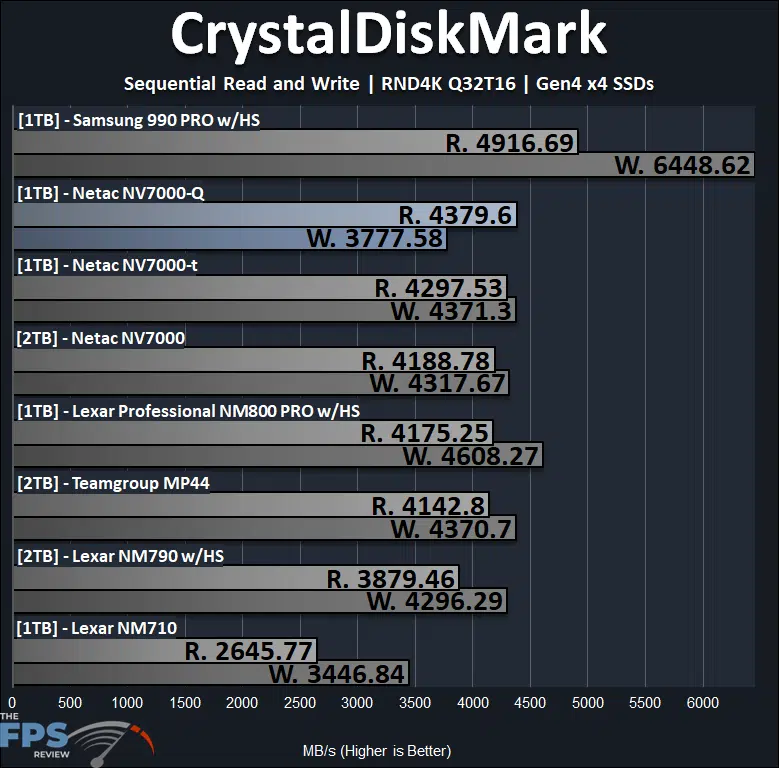
In RND4K Q32T16 performance the Netac NV7000-Q 1TB PCIe Gen4x4 NVMe SSD has excellent read performance at 4,379MB/s. The Netac NV7000-Q actually beats out the Netac NV7000-t by 2% and betas the Netac NV7000 by 5% on random read performance. This boads well for random read file access.
Where the Netac NV7000-Q 1TB PCIe Gen4x4 NVMe SSD falls behind is in the random write performance. At 3,777MB/s it has the next to the last performance level on random writes. The Netac NV7000-Q is 14% slower than the Netac NV7000-t and 13% slower than the Netac NV7000, which had similar write performance. The Samsung 990 PRO had the best read-and-write random performance out of the bunch by a large margin.
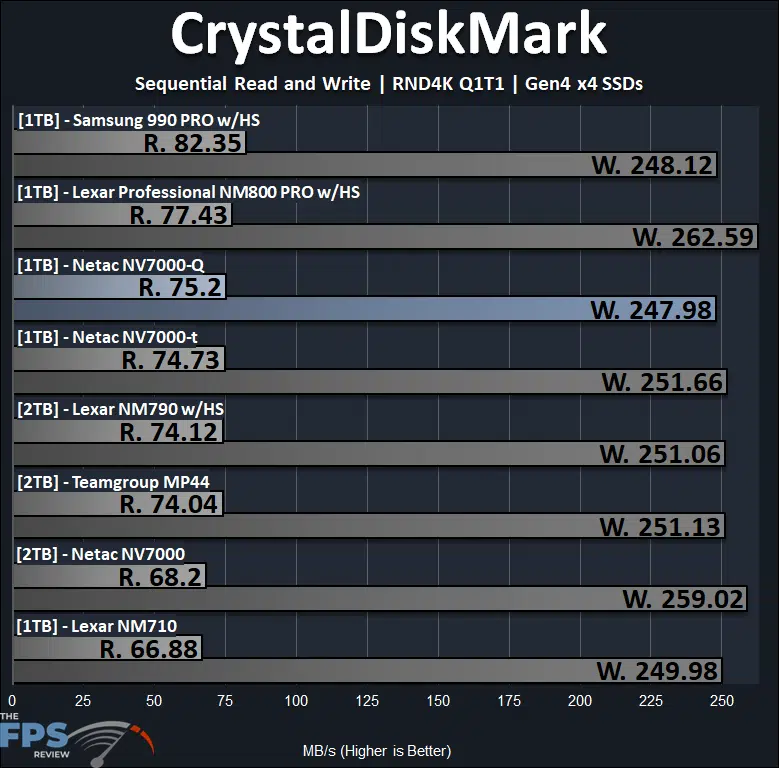
In RND4K Q1T1 performance the Netac NV7000-Q 1TB PCIe Gen4x4 NVMe SSD has a strong random read performance once again at 75MB/s it beats the Netac NV7000-t and Netac NV7000. However, once again it falls behind on write performance now with the lowest random write performance in this group of SSDs, which oddly matches the Samsung 990 PRO in this test. The Netac NV7000-t has a 2% higher random write performance and the NV7000 has a 5% random write performance.
ATTO
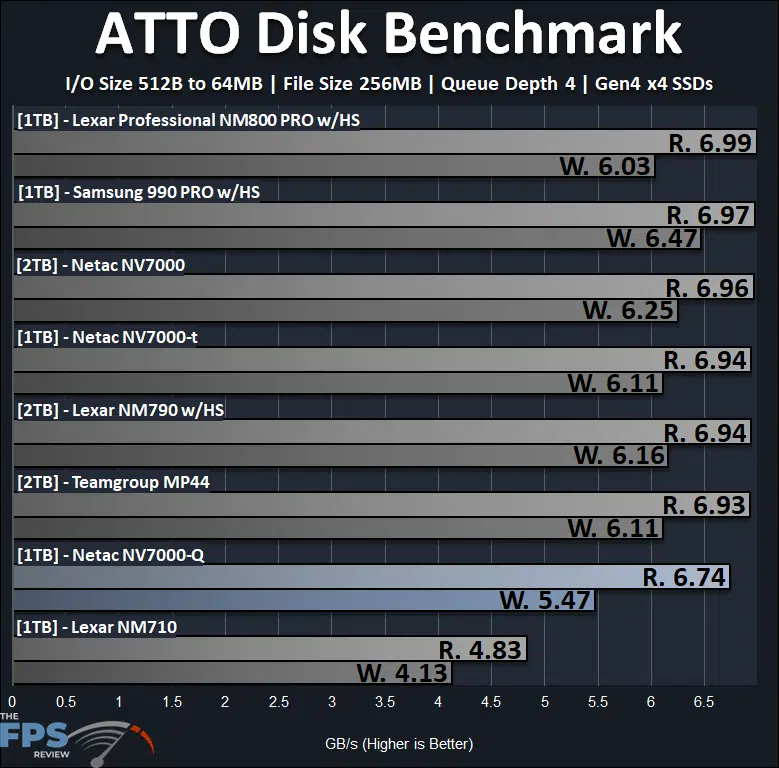
Using the popular ATTO Disk Benchmark, the Netac NV7000-Q 1TB PCIe Gen4x4 NVMe SSD is performing next to the slowest SSD in this roundup, according to this benchmark. At 6.74GB/s the Netac NV7000-Q is 3% slower than the Netac NV7000-t and Netac NV7000 on read performance. At 5.47GB/s write it is 10% behind the Netac NV7000-t and 12% behind the Netac NV7000 on write performance, sequential.

